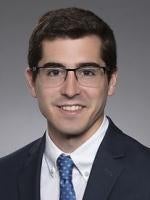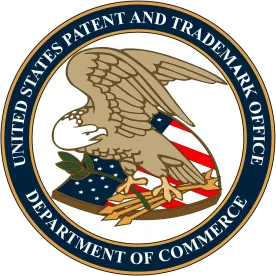Introduction
This article is the fifth in a five-part series. Each of these articles relates to the state of machine-learning patentability in the United States during 2019. Each of these articles describe one case in which the PTAB reversed an Examiner’s Section-101 rejection of a machine-learning-based patent application’s claims. The first article of this series described the USPTO’s 2019 Revised Patent Subject Matter Eligibility Guidance (2019 PEG), which was issued on January 7, 2019. The 2019 PEG changed the analysis provided by Examiners in rejecting patents under Section 101[1] of the patent laws, and by the PTAB in reviewing appeals from these Examiner rejections. This article describes another case where the PTAB applied the 2019 PEG to a machine-learning-based patent and concluded that the Examiner was wrong.
Case 5: Appeal 2017-005993[2] (Decided March 1, 2019)
This case involves the PTAB reversing the Examiner’s Section 101 rejections of claims of the 12/821,664 patent application. This application relates to using
“clinical information, molecular information and computer-generated morphometric information in a predictive model for predicting the occurrence, response to treatment, or survivability of a subject with breast cancer. . . . an integrated platform which relies on principles of machine learning to combine clinical data with quantitative biomarker characteristics.”
The claims discuss machine learning in the step of “providing a machine learning application with a population dataset from a data storage device . . . to generate an effective treatment model using linear discriminant analysis on the population dataset.”
The Examiner contended that the claims were patent-ineligible because they were directed to: (1) “detecting the judicial exception of naturally occurring levels of [molecules]”; (2) “the steps of storing numerical values in a computer dataset, mathematical manipulation and evaluation of data, and generating treatment modules[:] . . . a law of nature in the form of a mathematical algorithm or an abstract idea”; (3) “abstract ideas for reciting mathematical concepts or relationships related to expression levels of certain protein biomarkers”; and (4) “‘routine laboratory procedures’ . . . [that] do[] not add any ‘meaningful limitation’ to the claims.” The Examiner also made the argument that “the mathematically manipulated expression data that is processed is never applied to perform a physical step[; and] the complexity of the computer algorithm . . . does not render the manipulation of data on a computer any less abstract.” This final argument, relating to a “physical step,” is not expressly provided for in the 2019 PEG; but this argument seems to be related to “practical application” and “integration” in Step 2A Prong 2.
The Examiner’s arguments included the “abstract idea” judicial exception, as well as the “law of nature” and “natural phenomena” judicial exceptions. With respect to the “abstract idea” judicial exception, the Examiner seems to have directed its arguments to the “mathematical concepts,” and “mental processes” categories. The Examiner’s arguments also included that the additional limitations do not integrate the abstract ideas into a practical application.
The Applicant made three arguments: (1) “the claims include specific hardware and structural limitations, such as an imaging device and an immunofluorescence biomarker assay, which render the subject matter as directed to more than just a natural correlation”; (2) the tools are “specifically arranged and ordered to make practical use of measured biomarker data”; and (3) “the claims require, inter alia, a ‘machine learning application’ that evaluates [data] . . . to generate statistical models.” In this third argument, the Applicant seems to explain that, because of the way the machine learning application is applied, a mental process is not recited. The Applicant did not seem to address the Examiner’s other bases for asserting that the claims recite a judicial exception. However, the Applicant did argue that even if the claims recite a judicial exception, the judicial exception is integrated into a practical application based on the resulting use of biomarker data, and the inclusion of hardware and structural limitations.
The PTAB indicated that the “natural phenomena” judicial exception was recited because the claims include “measuring ‘expression levels’ of naturally occurring proteins.” The PTAB indicated that the “mathematical concepts” category of the “abstract ideas” judicial exception was recited because the claims include “calculating a subject’s protein-expression level.”[3] The PTAB did not address the other categories of abstract ideas, or whether the “law of nature” judicial exception applied.
The PTAB agreed with the Applicant that the claims are not directed to a judicial exception because the additional machine-learning elements are sufficient to incorporate the abstract ideas into a practical application:
we find that the specific operations and inputs employed by the recited machine learning application in generating an effective treatment model impose meaningful limits to the claims beyond any judicial exception.
This was based on the PTAB finding that the claim requires the computing device and a machine learning application that are also configured to carry out specific operations in furtherance of generating an effective course of treatment for the subject with cancer.
The PTAB concluded that the recitation of the “machine learning” step incorporates the abstract idea into a practical application by carrying out operations that are in furtherance of the “needs” that the invention is described to be directed to addressing and solving.
The Examiner, in his arguments above, discussed the need for a “physical step”; and the Applicant, in his arguments above, explained that the claims recite sufficient “hardware and structural limitations.” The PTAB, in addressing these arguments, stated that “claim 65 requires hardware and computing features that interoperate in specific ways to carry out the claimed method” (referring to the claim’s recitation of an “imaging device,” “computing device,” and “image analysis device”). Then, the PTAB stated:
The Examiner provides no support or authority for the notion that a ‘physical step,’ outside the aforementioned hardware and specific computer operations/steps must be made in order to demonstrate a sufficient practical application of the invention claimed.
Accordingly, the PTAB determined that the claims included a practical application. The PTAB did not proceed to determine whether the claims also recited an inventive concept.
Conclusion
This case illustrates that:
(1) an integrated platform that combines clinical data with quantitative biomarker characteristics was held to not be an abstract idea, in this context, despite “reciting” an abstract idea;
(2) an Applicant can overcome a rejection to claims that were determined to recite both “abstract ideas” and “natural phenomenon”;
(2) the recitation of a machine-learning algorithm in the claims did not seem to hurt the Applicant’s arguments under Step 2A Prong 2 of the 2019 PEG; and
(3) an Examiner’s argument, based on a method lacking a “physical step,” that an abstract idea is not integrated into a practical application, might not be very strong.
This case and the four previous cases each provide a different example of how the PTAB approaches reversing Examiner 101-rejections of machine-learning patents under the 2019 PEG.
-
The first case illustrated the effect of reciting AI components in the claims of a patent application.
-
The second case illustrated methods for overcoming rejections based on the “mental processes” category of abstract ideas, on an application for a “probabilistic programming compiler” that performs the seemingly 101-vulnerable function of “generat[ing] data-parallel inference code.”
-
The third case illustrated methods for overcoming 101 rejections where the PTAB has found that an abstract idea is “recited.”
-
The fourth case illustrated how a number of arguments made by an Applicant might be fit into the 2019-PEG structure, including an argument that the Examiner has “over-generalized the claim in characterizing it.”
Throughout 2020 and beyond, the lessons learned from these five cases will continue to be applicable to § 101 patent prosecution practices, and to PGRs, under the USPTO’s 2019 Revised Patent Subject Matter Eligibility Guidance.
FOOTNOTES
[1] 35 U.S.C. § 101.
[2] https://e-foia.uspto.gov/Foia/RetrievePdf?system=BPAI&flNm=fd2017005993-03-01-2019-1.
[3] The October Update to the 2019 PEG provides that “a claim does not have to recite the word ‘calculating’ in order to be considered a mathematical calculation. For example, a step of ‘determining’ a variable or number using mathematical methods or ‘performing’ a mathematical operation may also be considered mathematical calculations . . . .” However, even though “calculating” can easily be replaced with a different word, the word “calculating” seems to be a “red flag” for examiners, and its use might therefore be more likely to result in a 101 rejection.





 />i
/>i

